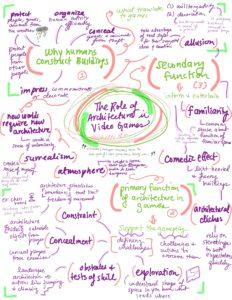
I really enjoy the architecture of Club Penguin, a virtual penguin world. It’s reminiscent enough of real-life for the player to be familiar with the locations in the world (ex. town square, home/igloo, shop, restaurant, coffee store), yet it’s also unique in the details and the visuals as all of it revolves around the imaginary world of a penguin town and what the lifestyle of penguin avatars could be (ex. snow sliding activities, adopting and walking pets called puffles). The mix of familiarity and unfamiliarity makes for a novel experience that even young kids can understand and enjoy (I played the game as a child). Additionally, the architecture was well developed such that there were always things to explore and discover. For example, if you’re in one location like the coffee store, you do not know what is happening in the other locations. So, the player must walk/waddle their penguin character to move between different locations, effectively making use of concealment to create a visual space rich for wandering around.



